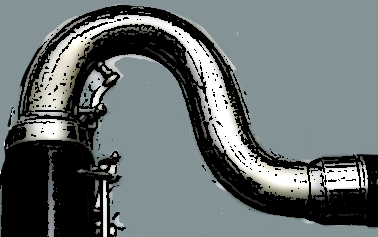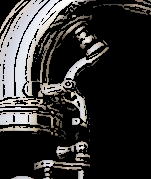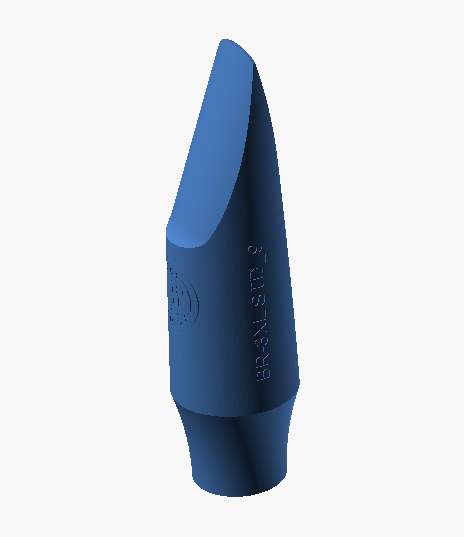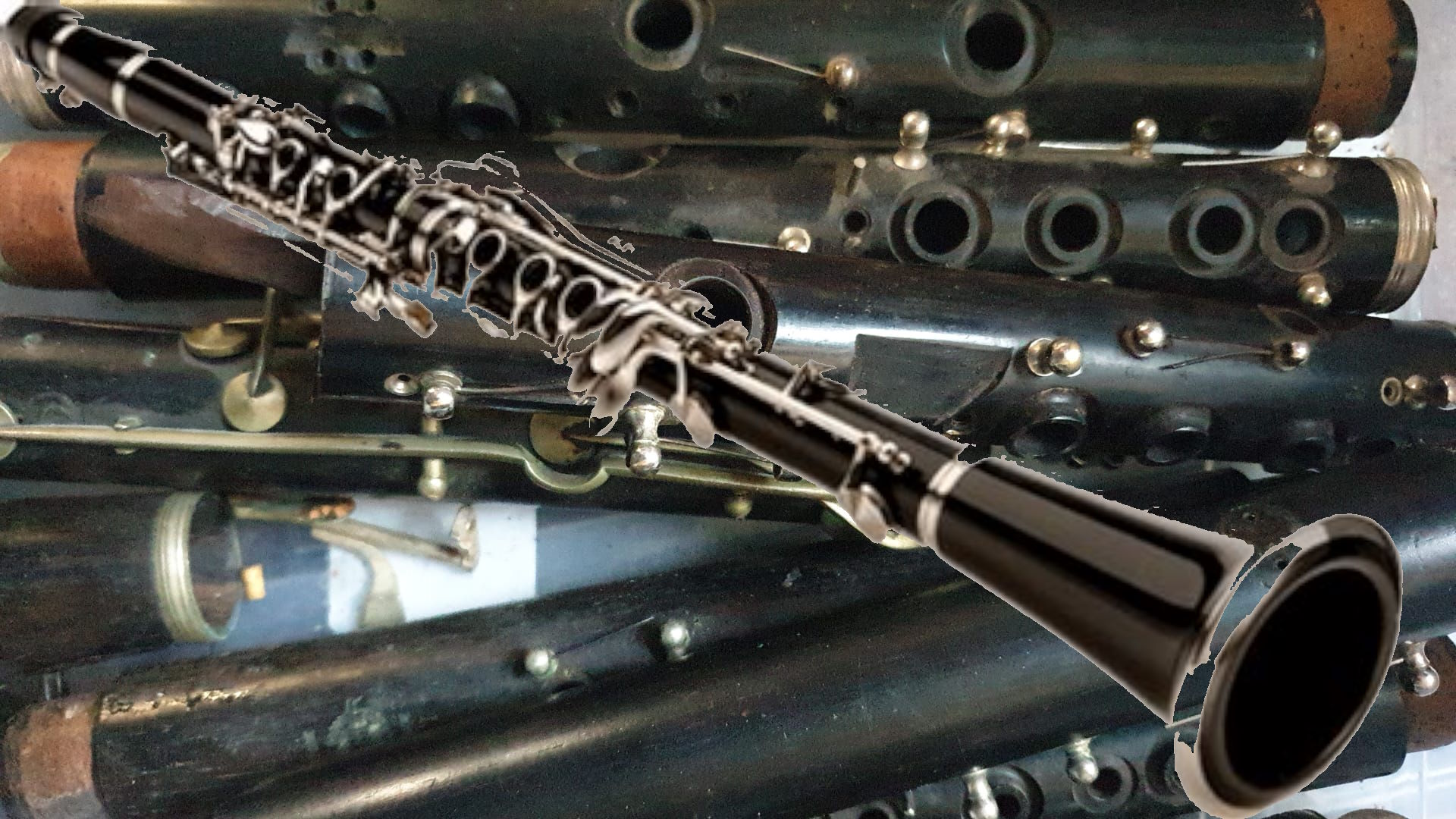Identification of the Selmer Paris bass clarinet
There are a lot different Selmer Paris bass clarinet models and the differences are sometimes quite subtle. It is not easy to determine the exact model or year of production. So I decided to spend some time on that.
To enable a wider audience to comment this article I decided to write it in (my best version of) english. So comment and additions are very welcome.
The confusion of series, models and designs
The serial numbers start with a letter that is sometimes used as series name. So serials numbers A0100 to A9999 are sometimes described as the A-series.
Selmer uses the following numbers to identify the different models from 1945 to 1988:
- model 30 - bass clarinet with Boehm system to low Eb
- model 32 - bass clarinet with Boehm system to low Eb with articulated G# and Eb-Ab lever
- model 33 - bass clarinet with Boehm system to low Eb with articulated G# and Eb-Ab lever
- model 37 - bass clarinet with Boehm system to low E
- model 38 - bass clarinet with Albert system to low Eb
Before 1945 but also in the 70's other model numbers are used (maybe for a specific market - maybe UK?)
- model 23 - bass clarinet with Boehm system to low Eb
- model 23a - bass clarinet with Boehm system to low Eb with articulated G# and Eb-Ab lever
- model 19 - bass clarinet with Boehm system to low E
Another confusion is the series 9, 9* and 10 that were introduced in the '60's and '70's. The term -series- has been used by Selmer and also printed on some models under the logo. These series have been used to identify different bore and tonehole designs:
- series 9
- introduced in 1960
- designed for jazz
- large diameter toneholes with no undercutting
- series 9*
- introduced in 1960
- designed for symphonic music
- a smaller bore
- introduction of undercutting
- series 10
- introduced in 1968
- a polycylindrical bore
- a more open and flexible instrument
- designef for symphonic music.
A few years after the introduction of series 10 this was the most frequently sold clarinet design(50 to 80%). It is not clear it is not clear whether that also applies for the bass clarinet.
I assume the series 10 is the successor of the 9*, but until 1982 the 9* was in production next to the 9 and 10 series.
I hope to come across the different series soon. I will then measure all toneholes (diameter and position) and hope to publish that here.
to be continued.with sections about:
Part 1 - The Selmer Paris bass clarinet neck
I came across four different types of necks
- a one piece neck used before 1940 with a angle of about 90 degrees
- a split tunable neck with a steep angle
- a split tunable neck with reinforced strips on top and bottom and a steep angle
- seen on a 1953 bass clarinet
- as 2 but with a logo plat on the front.

I have seen necks that had strong reinforcement bars of 4mm round brass on each side. But I don't think that is original.
The lever that connects with the register mechanism on the upper joint has different designs:
- a flat and spatula shaped lever on the early models (seen on a 1953 model)
- a straight lever on the left of the key on the later models
- a lever wit a right angle to the left on the later models (1980)



(illustrations will follow)
Part 2 - The bell key
The early pre-WWII Selmer Paris bass clarinets have the bell key like most brands with the axis perpendicular to the centre line of the instrument. Later the typical Selmer Paris inline axis design is used.
(illustrations will follow)
Part 3 - the register mechanism
The earliest Selmer bass clarinets have a spatula shaped lever and a quite complex mechanism.
The design was changes into a very simple model that doesn;t need adjustment screws.
The lever changed romf a spatula shaped lerver into a moon shaped lever on the right of the G key.
It was change for a while into a similar shape to the left of the G key. But with model 37 is was again on the right of the G key.
(illustrations will follow)
Part 4 - the articulated C#/G#
On the earliest models the C#/G# tonehole was not in line with the other left hand toneholes and the key and lever were on the same key that directley opened the tonehole when activated. Later on the C#/G# tonehole was position inline with the other toneholes and the key was activated indirectly. The lever released of lifted the key. This was done to enable the closing of the key by a connection with the B/F key on the lower joint.
Selmer produced for a long time low E and Eb bass clarinet with and without articulated C#/G#.
(illustrations will follow)
Part 5 - the left hand pinky section
The simplest section used on the older models and on model 30 consisted of three levers:
- C#/G#
- E
- F
On the models 33 and 37 an extra Eb/Ab lever was added.
The low C models were introduced in ... and added two extra levers for D and F#/
(illustrations will follow)
Part 6 - adjustment screws
Adjustment screws are used on
- the A and Bb key on all models
- unlike other brand not in the register section on any model
- the right hand section (A/E and Bb/F key synchronisation) from model 37?
- the low C extension section from model 37?
(illustrations will follow)
Part 7 - the extension keys
The keys to play the low C Db and D have a lot of different designs.
- three spatula shaped keys in a row on the left of the thumb hook
- two spatula shaped keys in a row on the left of the thumb hook and a sixth right hand pinky key
- two square shape keys with a rolle below the thumb hook
(illustrations will follow)
part 8 - The logo's
The early models carried two logo’s. One uncoloured on the upper joint and one gold coloured on the lower joint.
Variations:
- Model 37 also has a golden logo on the upper joint
- Late model 33 have the text “MADE IN FRANCE”under the logo and an R placed in a circle under the logo.
- There are old models with the text “FRANCE” under the upper joint logo
- Some models have the text “DEPOSE” above the upper joint logo.
A plate with a logo was used on the neck starting with model 37
A logo was used on the bell starting with model 37
(illustrations will follow)
(this article is under construction. all claims are not 100% certain).
 Op 15 juni is het weer jaarmarkt in Heukelum (zie
Op 15 juni is het weer jaarmarkt in Heukelum (zie _0x200.jpg)
 Vanwege de regekmatige vraag naar bes klarinetten gaan we ook gereviseerde klarinetten aanbieden.
Vanwege de regekmatige vraag naar bes klarinetten gaan we ook gereviseerde klarinetten aanbieden.-1666348987.jpg) We hebben niet alleen studiesaxofoons voor de verhuur.
We hebben niet alleen studiesaxofoons voor de verhuur.


